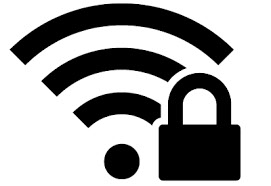So, you called the internet company and said ‘’Hey, I need internet, but I am going to install it myself.’’ You paid the bill, bought a router, you have all the cables plugged in, and you set up your basic password. Your all set, right? …… Wrong.
Although you have done the basics, did a few Google searches, and now you feel as if the world is yours…. You are far from done. ‘’What if I have my internet providers come out and install it? I’m sure they have all the answers and abilities to secure my connection to the point of no return’’. Wrong again.
They have a job to do, yes. But their job isn’t to make sure your connection is secured and the best by giving you tips on how to keep hackers away, that’s my job. Their job is to make sure your connection is decent by following the company’s basic guidelines. Which generally makes your network accessible to hackers. Never fear, I am going to give you simple, yet not common, easy ways to go beyond and have your Wi-Fi connection secured.
Here is a good review debating the top internet service providers http://www.reviews.com/internet-service-providers/ . Once you have done all the necessities, make sure to follow these guidelines below to guarantee a protected network.
Step 1. Password- This is by far the most basic step. Yet it’s the main one people seem to ignore, or either rush through without giving it proper thought. To go through and see the list of the most common passwords, here is a link. http://www.passwordrandom.com/most-popular-passwords But for now, here are some tips for strong password.
- Make your password at least 8 or more characters. It lessens the chance of someone guessing it as they would a 4-6-character combination.
- Switch it up and combine. A small trick that many don’t use is the ”combine method”. As someone who has attempted to guess passwords over and over, it is extremely hard to figure out where someone took numbers out and put letters in as their password. It’s confusing and takes up much time.
- Add spaces, uppercase letters, phrases, etc. Make it unique, so unique that even you would have a hard time remembering it (write it down).
Here is a website based on helping users build a strong password, by experimenting. http://passwordsgenerator.net/
Step 2. Using WPA2, WPA2 personal, WPA, or WEP- In a basic summary, these were created to keep your connection safe and secure etc. By default, most wireless devices are set up with WEP (Wired Equivalent Privacy), or worse, nothing. WEP sends off a false sense of security. It can help, but being that is was made in 1990, it’s easy for modern hackers to access.
Tip– When you are installing your wireless device, typically you will be prompted to choose between the 4 protections. The best way to make sure your connection will be safe, is to use WPA2 personal. It gives you a government based security to reduce the chances of your password being cracked or network being impacted negatively.
Step 3. Reduce the Range of your Wireless Signal
Normally wireless routers have a high range that can cover plenty of ground that you don’t need. So, if you stay in an apartment complex, or small house, you should decrease the signal range. That way many people will not know that you have Wi-Fi to begin with. In doing so, it should decrease the chances of your network being accessed.
Tip- Change your router mode to 802.11g, or try using a different wireless station (Channel).
-Sources used- http://www.howtogeek.com/
If you follow these 3 key steps, i’m sure it will help deliver a great connection, give you what you paid for, and ultimately … provide you with a piece of mind.








